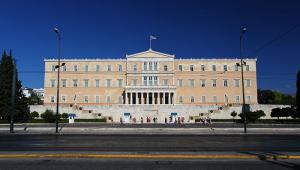In a move that surprised markets, the bank said it will reduce its bond-buying programme from €80bn per month currently to €60bn at the end of March next year.
However, the bank also said the programme will run until December 2017, “if necessary” – longer than anticipated.
If the programme does run until December next year, it could end up buying more bonds than if it had maintained asset purchases worth €80bn per month and only extended the programme for six months after March.
In his statement, ECB president Mario Draghi said the programme could also stretch beyond December and “in any case until the [bank’s] Governing Council sees a sustained adjustment in the path of inflation consistent with its inflation aim”.
He also left the bank the option to increase the programme’s size or duration if conditions become “less favourable” or steer the eurozone off course from the bank’s inflation target of below, but close to, 2%.
Investors had been hoping for an extension of the bank’s QE programme at the same rate, and are likely to see the move as “tapering” – a term that refers to the gradual roll back of the US Federal Reserves’ QE programme in 2013.
But Draghi said the ECB’s decision would ensure financial conditions remain favourable. He added: “The extension of our purchases over a longer horizon allows for a more sustained market presence and, therefore, a more lasting transmission of our stimulus measures.”
A ‘tapering’, or gradual reduction in purchases over time until the bank isn’t making any, “was not discussed and is not even on the table”.
Jennifer McKeown, chief European economist at Capital Economics, commented “it seems the bank has a clear bias in favour of more policy support in future”.
The bank also announced some alterations to its quantitative easing policy, amid concerns that current restrictions mean it could run out of eligible bonds to buy.
The bank will now be able to buy debt that yields below the 0.4% interest rate it pays on commercial bank deposits. This could trigger a shift to purchasing more bonds with short maturities – a prospect that pushed yields on long-term government bonds up.
“The upshot of all this is that large ECB asset purchases now look set to continue throughout next year and probably well into 2018,” said McKeown.
“This marks a stark contrast with our expectation of significant policy tightening by the Federal Reserve, supporting our view that the euro is set to depreciate to parity or lower against the dollar.”
The bank also announced its growth forecasts for the eurozone: predictions remained largley the same, with expected growth of 1.7% next year and 1.6% in 2018.












